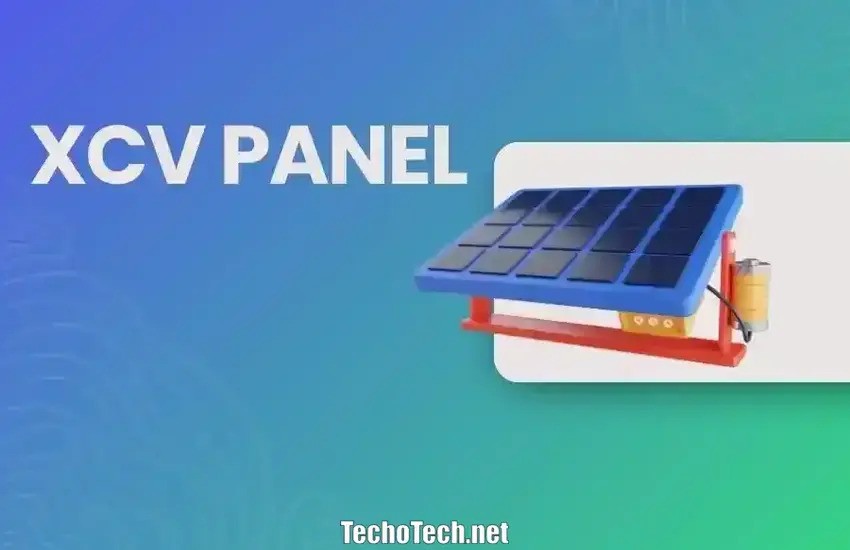Introduction
Solar power is one of the most efficient and dependable renewable energy sources, and the energy business has moved toward it. With improved technology, solar panels are now inexpensive and accessible to customers worldwide, boosting installations. The “XCV panel” is a popular solar panel. These next-generation solar panels have several advantages over older ones and might revolutionize solar technology.
This blog article will discuss what makes XCV panels unique, how they function, technological advances, real-world applications, and their future.
What are XCV panels?
H2EROWATT, an Italian alternative energy research company, developed XVC (pronounced like excavate) photovoltaic cells, which have much higher efficiency than conventional PV or flat concentrated monochromatic bandgap-engineered technologies. XCV panels are high-efficiency solar panels that convert more solar energy into electricity.
XCV Panel Benefits
1. Increased Efficiency: XCV panels may reach 60% efficiency, compared to 15-20% for flat-plate solar panels. This efficiency boost generates more energy with the same sunshine, making them ideal for places with less direct sunlight or restricted installation space.
2. Cost savings: Because XVC panels are efficient, fewer are needed to create the same type of energy. This reduces installation expenses and increases long-term savings.
3. room-saving Design: Due to their size and positioning, traditional solar panels take up a lot of room. However, XCV panels use mirrors and lenses to reduce their footprint and generate more energy per square foot.
4. Extreme Conditions Reliability: XCV panels are designed to withstand hailstorms and heavy snowfall. These panels last longer than regular solar cells due to their sturdy materials and design.
How Do XCV Panels Work?
The reflecting surfaces of XVC panels focus light onto photovoltaic (PV) cells. PV cells use semiconductors like silicon to directly turn sunlight into electricity.
The Active Matrix Output Current flows through a clear PMMA Fresnel lens on the front contact. LTP series stage stacking is added to get rid of dead by-pass internal diode load losses and lower resistance. balancing loading and cadmium variation to maintain constant voltage and ultra-low initiation.
XCV Panel Technology Advances
XCV panel technology has improved efficiency and application throughout time. Among these developments:
1. Smart Tracking
XVC panels may optimize their location based on the sun’s movement throughout the day using advanced tracking technology. This function keeps panels toward the most direct sunlight, boosting energy output.
2. Integration with Energy Storage Systems
Solar power is intermittent and only creates electricity when the sun is out. XCV panels are being coupled with batteries or hydrogen fuel cells to circumvent this constraint and deliver constant energy. This stores extra energy from peak solar hours for later use.
3. Better Material Selection
As technology advances, so does material science, and researchers and manufacturers are always trying new XVC panel materials to increase performance. For instance, hybrid materials like perovskite can boost panel efficiency and lower prices.
Future Solar Tech with XCV Panels
The developments in XCV panel technology position them as a game-changer for the future of solar energy. Their influence on renewable energy adoption might be huge.
First: increasing efficiency generates more energy with fewer resources, saving money and making it more accessible to customers worldwide.
Second: their small size and weather-resistant properties allow them to be deployed anywhere without losing dependability or space.
Real-World XCV Panel Applications
Case studies have confirmed XCV panels’ efficacy and influence in real-world situations. One example is UCF’s NanoScience Technology Center’s nano-optic solar-powered water purification membrane employing XVC technology. In underdeveloped countries with little energy, this device provides clean drinking water efficiently, reliably, and cheaply.
People Also Ask
1. Are XCV panels disadvantageous?
XCV panels have few drawbacks; however, their superior technology and materials may increase their initial cost.
2. Does switching to XCV panels cost money?
The initial expenditure may appear high, but the long-term advantages, such as enhanced efficiency and cost savings, may make it worthwhile.
3. How long do XCV panels last?
XVC panels last 20–25 years, like typical solar panels. They become more dependable with time due to their endurance and strong weather resistance.
4. Do XVC panels differ from conventional solar panels?
XCV panels are more efficient and space-saving than standard solar panels. Due to improvements in building materials, they last longer.
5. Can I install XVC at home?
If space and finances allow, XCV panels can be installed in homes. Their small size and configurable choices make them versatile.
Summary
XCV panels have significant potential to revolutionize the renewable energy environment. Their efficiency, cost reductions, longevity, and small form make them a popular solar technology. XCV panels will shape solar technology’s future as materials, sophisticated tracking systems, and energy storage technologies improve. As people and organizations value sustainability and seek renewable energy, XCV panels will become more prevalent.


Hey there! Would you mind if I share your blog with my myspace group? There’s a lot of people that I think would really enjoy your content. Please let me know. Thanks
[…] The Future of Solar Tech: XCV Panel Innovations and Contributions […]
Thx for your post. I would like to say that the cost of car insurance differs a lot from one coverage to another, given that there are so many different facets which give rise to the overall cost. For example, the make and model of the car will have a massive bearing on the charge. A reliable ancient family vehicle will have a lower priced premium than a flashy fancy car.
Remarkable precision!